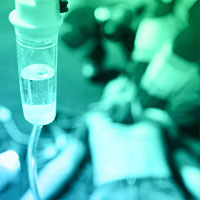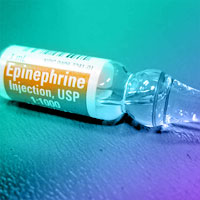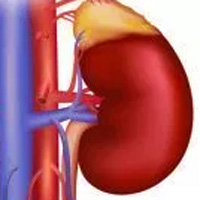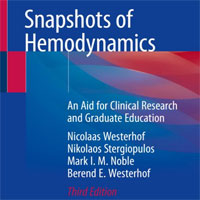Tag: hemodynamics

Metabolic sepsis resuscitation: the evidence behind Vitamin C
Sepsis resuscitation generally focuses on hemodynamics. Rivers of ink have been spilled writing about oxygen delivery and fluid responsiveness. This is clearly important, but it's possible that our focus on easily... read more

Vasopressors and Inotropes for Shock Syndromes
Vasopressors and inotropes are cornerstones in the management of shock syndromes. Understanding vasopressors' receptor activity and resultant pharmacological response enables clinicians to select the ideal vasopressor(s)... read more

Effect of Single-Dose Dexmedetomidine on Intraoperative Hemodynamics and Postoperative Recovery during Pediatric Adenotonsillectomy
Premedication of dexmedetomidine at the dose of 1 μg/kg in children undergoing adenotonsillectomy resulted in favorable effect on intraoperative hemodynamics, significant decrease in postoperative EA without causing any... read more

Study of the Effects of Epinephrine on Cerebral Oxygenation and Metabolism During Cardiac Arrest and Resuscitation by Hyperspectral Near-Infrared Spectroscopy
Epinephrine administration by bolus resulted in transient improvements in cerebral oxygenation and metabolism, whereas continuous epinephrine infusion did not, compared with placebo. Future studies are needed to evaluate... read more

Hypotensive Response to IV Acetaminophen in Pediatric Cardiac Patients
In isolation of other medication, a hemodynamic response to IV acetaminophen has a higher prevalence in critically ill children with cardiac disease than previously thought and justifies controlled studies in the perioperative... read more

Validation and Critical Evaluation of the Effective Arterial Elastance in Critically Ill Patients
In critically ill patients, effective arterial elastance may be reliably estimated at bedside. We support the use of this validated estimate of effective arterial elastance when coupled with an index of left ventricular contractility... read more

Artificial Liver Support in Acute and Acute-on-Chronic Liver Failure
Liver support systems such as MARS and TPE may temporarily improve systemic hemodynamics and the degree of encephalopathy. However, TPE is the only procedure that improves survival in patients with ALF. The role of TPE in... read more

A Trial of Goal-oriented Hemodynamic Therapy in Critically Ill Patients
Hemodynamic therapy aimed at achieving supranormal values for the cardiac index or normal values for mixed venous oxygen saturation does not reduce morbidity or mortality among critically ill patients. A total of 10,726 patients... read more

Angiotensin II For Septic Shock Treatment
Angiotensin II has been studied for many years and has consistently shown to increase MAP. This medication adds a new mechanism of action to the vasopressor arsenal that is already used for septic shock. Angiotensin II should... read more

Lactate-Guided Resuscitation Only Encourages Over-Resuscitation and Downstream Harms
The Centers for Medicare and Medicaid Services and the Surviving Sepsis Campaign both rushed to offer guidance on the appropriate management strategies for patients presenting with septic shock. In both cases, a lactate-guided... read more

A Pilot Study Evaluating the Effect of Cooler Dialysate Temperature on Hemodynamic Stability During Prolonged Intermittent RRT in AKI
Acute kidney injury (AKI) requiring renal replacement therapy (RRT) is associated with high morbidity and mortality. Complications of renal replacement therapy include hemodynamic instability with ensuing shortened treatments,... read more

Snapshots of Hemodynamics: An Aid for Clinical Research and Graduate Education
This new edition reviews recent developments in genetics and molecular biology and new noninvasive measurement techniques that have enabled vast improvements in the measurement and understanding of cardiovascular hemodynamics.... read more

Determination of Brain Death Under Extracorporeal Life Support
The worldwide use of extracorporeal lung/life support is increasing in severe lung failure (veno-venous extracorporeal membrane oxygenation, vvECMO) or in cardiac arrest/severe circulatory failure (veno-arterial ECMO, vaECMO).... read more

Early or Delayed Cardioversion in Recent-Onset Atrial Fibrillation
In patients presenting to the emergency department with recent-onset, symptomatic atrial fibrillation, a wait-and-see approach was noninferior to early cardioversion in achieving a return to sinus rhythm at 4 weeks. The presence... read more








